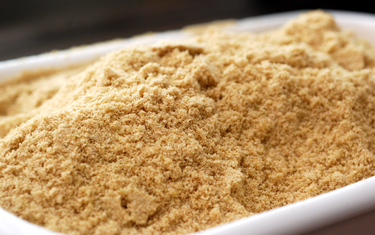As you know, rice has been a main staple food in Japan since ancient times and there is a wide variety of rice-originated food. For instance, Difuku (a soft round rice cake stuffed with sweet bean jam), Senbei (rice cracker), Sake, Komekoji (malted rice), Komeyu (rice bran oil), Shochu (distilled spirits), Mirin (sweet sake), Komezu (rice vinegar), etc.
Today we are going to tell you about "Nukazuke", rice bran pickles, which is recognized as Japanese superfood.
What is Nukazuke?

Nukazuke is vegetable pickles fermented in rice bran. "Nuka" is a product obtained by milling rice consisting of the seed coat, a fraction of the grain removed in milling, the germ, and broken grains. It contains rich nutrients such as vitamin B and dietary fibers. It is usually not eaten and disposed. However, we can make vegetables pickles using Nuka, which even increases their nutritional values.
To make Nukazuke, lactic acid bacteria in Nuka and vegetables need to be fermented. Let’s think of sauerkraut in Germany as an example. If you leave vegetables in Nuka at room temperature for a few days, lactic acid fermentation proceeds. It is important not to let other bacteria in it.
Once Nuka is put in a container and lactic acid-fermented, it’s called "Nukadoko". As long as it’s well fermented, all you have to do is just put vegetables in. Typical ingredients are cucumbers, cabbages, turnips and carrots. Asparagus, avocado, zucchini, okra and skin of watermelon can be also good.
How to Prepare Nukadoko

How to prepare Nukadoko is the key to making tasty Nukazuke. It can vary depending on the family tradition. We will show you the most typical basic one.
Ingredients
- 1kg of raw rice bran
- 130 to 160g of salt
- 1L of water
- 5g of dried kelp
- 2 red peppers
- About 100g of Vegetable scraps (to provide nutrition and water for fermentation of Nukadoko; outer cabbage leaves, carrot edge, radish skin, etc.)
How to Make Nukadoko

Then all you have to do is just mix the ingredients above well and put it in a container. However, it needs some more time (about 3 days, depending on environmental conditions) until lactic acid bacteria in Nuka and the vegetable scraps are activated and fermented.
Nukadoko will get watery as water is discharged from the vegetables due to the effect of salt. For its maintenance, you need to remove excessive water or add Nuka and salt if needed. For easy Nukadoko management, we will show you a Nukazuke-specific container named "Nukazuke Bijin" manufactured by Noda Horo.
How to make Nukazuke

It will take 1 to 3 days for the vegetables in Nukadoko to get ready. Once you take them out, wash them in running water and wipe them with kitchen towels. Then, cut them into good size. Flavor of Nuka and lactic acid fermentation make the vegetables taste even better. Also, the raw vegetables maintain their nutrition such as vitamin. Nukadoko is a kind of small home factory to produce superfood.
Maintenance of Nukadoko

As mentioned, Nukadoko will gradually get watery, but "Nukazuke Bijin" has a water catcher. If you put it in Nukadoko, the excessive water will be collected spontaneously. You only have to dispose the water.
If water drops when you scoop up and hold Nuka, it’s good time to use the water catcher.

Also, stir Nukadoko like turning it over every day. This will prevent bacteria propagation and make lactic acid fermentation occur uniformly.
When Nuka decreases, add Nuka and salt. Once you get the hang of it, you can add "Katsuobushi" (dried bonito) or yogurt to make your own taste and style.

Nukadoko will be your external partner once you prepare it. Let’s grow your one and only Nukadoko!













